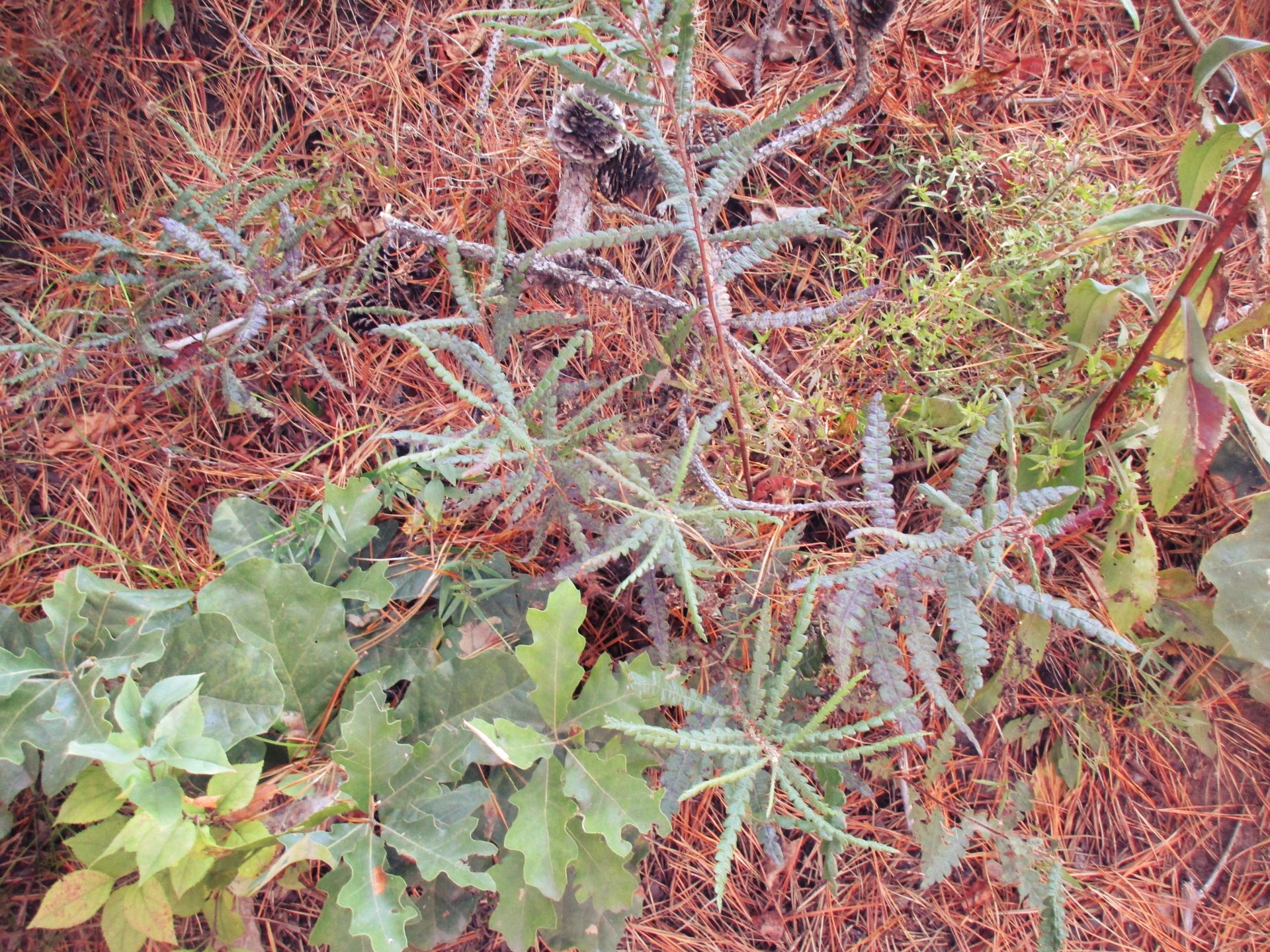by Tom Ellis
ALBANY: Albany Pine Bush Management Commission (APBMC or the Commission) Executive Director Chris Hawver was the October 15 SPB dinner speaker. Lynne Jackson and I introduced him saying that Save the Pine Bush is very pleased that the Commission exists and is protecting the Pine Bush. Lynne said the work of SPB has become institutionalized with the APBMC.
Chris said he has worked for the Commission since 1993, first as fire management coordinator, later as conservation director, and, beginning in 2000 as acting director, and he eventually becoming executive director. Both the Commission and the Pine Bush preserve were established by state law in 1988.
He said prescribed burns began in 1991. The goal was to eventually carefully burn a minimum of 200 acres each year, a goal not achieved until the prior week. Controlling burns is very difficult, he said. Burns occurred on the prior Friday, some only a handful of feet from the Discovery Center, others along the Blue Trail.
Black Locust trees–an invasive species–are being removed from the preserve by chopping them down and removing their roots. He said volunteers pant hundreds of pounds of seeds each year in the preserve.
Using a PowerPoint, he showed slides and photos of ongoing Commission activities. H2H, a hydro-geological firm in Troy, is examining if the Commission’s work has inadvertently raised the water table in and near the preserve, as some neighboring residents believe.
Commission staff monitor birds each spring and fall. Birds are caught in mist nets, banded on their legs, and released. Chris said this activity benefits both the Pine Bush and broader–national–research goals. He said that so far this year, 672 birds of 43 species were caught on seven mornings; 92 had been caught before.
Another activity is a flight tunnel study that gathers information on bird collisions with glass, the second leading cause of bird mortality in the US. (House cats are the leading cause of bird deaths.)
Chris said wildlife camera “traps” capture images of mammals such as deer and fishers in an effort to try to take a census of their numbers. Pine Bush deer population has been difficult to quantify, he said, but that amazingly, one deer seen 12 years earlier was recently seen again.
The commission uses data loggers–small machines that resemble a three-dimensional AT&T logo–to collect information on frost packets. Frost pockets occur because the Pine Bush is not flat; thus the temperature at the top of a dune may be a few degrees warmer than at the bottom of valleys between dunes. This is a new project with no data available yet to report.
Chris had good news to report on Karner Blue Butterfly (KBB) populations. Eight-thousand were present during the spring brood this year and 14,000 in the summer brood. Ten years ago only 500 were present the whole year. Chris said the high numbers this year are the result of many factors including good luck and good weather. Karner Blue populations, like those of other insect species, can fluctuate considerably from year to year due to many factors including the depth of the snow pack and climate change. KBB lay eggs in spring that hatch in summer; those that hatch in summer lay eggs that hatch the next spring. The eggs must be insulated over the summer, thus the depth of the snow pack is a critical parameter. A lack of a snow pack will limit the KBB census the next spring and summer. Counting KBB is done via a combination of physical observation and complex statistical analysis. Chris said climate change could severely impact KBB and other species that are remnants of the last Ice Age.
Chris was pleased to report that the Pine Bush had received National Natural Landmark (NNL) status a few months ago. The Commission applied for this designation in 2011. NNL was granted in part due to the unique features of the Pine Bush– sand dunes and Pitch Pine trees. Chris said NNL designation increases the protections available to the Pine Bush because the State Environmental Quality Review SEQR) application has a question about if the site of a proposed action has NNL status.
One problem facing the Commission and the Pine Bush, Chris said, is there is no designated stream of federal funding for land acquisition. He said the preserve contains 3200 acres but the APBMC goal is a preserve of 5400 acres. He showed a map: most of the identified acres the Commission hopes to have added to the preserve are between Central Avenue, the Albany-Schenectady County line, the Thruway, and Route 155; most are in the town of Colonie, some are in Guilderland. He said the City of Albany bought the 9-acre “Higgins” property across 155 from the Discovery Center and gave it to the state, but it has not yet been formally placed in the preserve.
Chris said restoration work at the former trailer park (next to the Rapp Road Landfill) was successful and importantly, it gave the Commission a seat in the landfill restoration discussions.
Chris urged SPB members to get more involved in lobbying each year for a larger state Environmental Protection Fund (EPF) that is used to purchase land for preservation.
When asked about Woodlawn pine bush lands in Schenectady County and if they should be added to the Pine Bush preserve, he said there are several problems, one being that the Commission’s work is limited by law to Albany County; other difficulties are dumps and motorized vehicles in Woodlawn, and there is no land prescribed for preservation in Pine Bush preserve in Albany County that physically connects to the Woodlawn property.
Chris also said that CDTA (Capital District Transit Authority) buses now go to the Discovery Center on Saturdays.
Published in December 14/January 2015 Save the Pine Bush Newsletter
